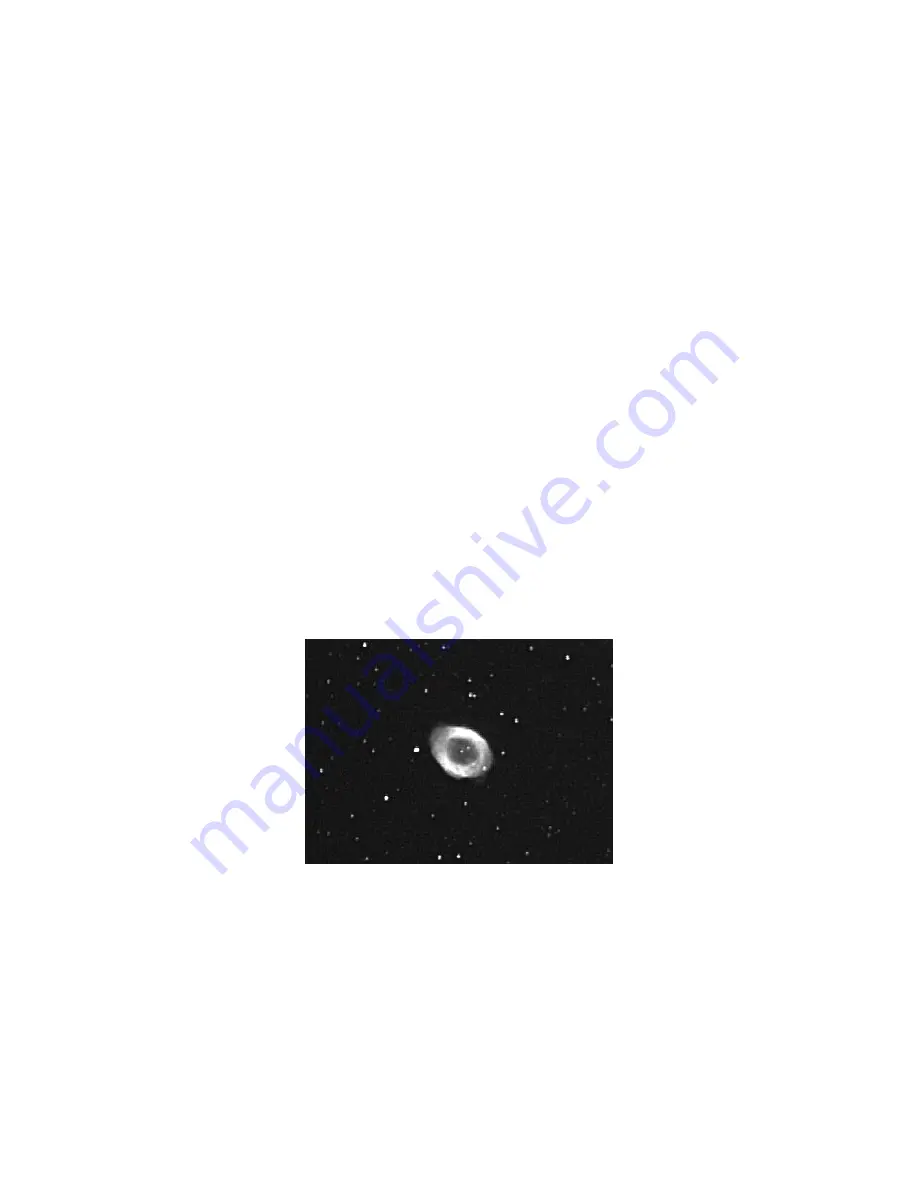
Handbook for SXV-M5 Issue 1 June 2004
23
Start the training cycle and the software will then sequentially drive the telescope in
all four directions, while recording the displacement of the reference star. After the
cycle has completed, the optimum correction speeds, backlash correction and
hysteresis values will have been calculated and inserted into the default boxes. Note
that the pixels per second rate for the R.A. correction will vary with the cosine of the
declination angle, so you may need to alter this value, or re-train the system when
changing between objects at widely different declinations.
Exposure times and image calibration
S.T.A.R. 2000 will enable you to greatly extend the exposure times of astronomical
images and so detect much fainter objects. The limiting factor is set largely by the
increasing effect of light pollution on these extended exposures, but dark sky sites will
permit 30 minutes, or more, to be used. You will also begin to see signs of amplifier
luminescence at the upper left-hand corner of your images and this will make dark
frame subtraction more important than usual.
The software includes an option to generate properly matched dark frames, by
recording the number of guiding downloads executed during the taking of the image
and using this to add the correct amount of amplifier glow to the resulting dark frame.
To use this option, you must record the dark frame immediately after the ‘light
frame’, or the download count will be lost. Simply cover the ‘scope aperture, select
‘Take matching dark frame’ in the self guider part of the camera control interface and
press ‘Take Photo’. Application of the ‘Gradient filter’ (under the Filter Menu) can be
used as a final ‘tweak’, if necessary.
Flat field frames can be taken in the usual way, and are not affected by the use of
S.T.A.R. 2000.
A clip from a self-guided ‘STAR 2000’ SXV-M5 image
*********************************************************************
Using the add-on autoguider:
An alternative to STAR2000 and a very useful accessory is the add-on autoguider
head, which takes its power and control signals directly from the SXV camera, via the
18 way socket on its rear panel. The autoguider is only 1.25” in diameter and has a








































